HealthTech: Overview of MedTech industry in IT
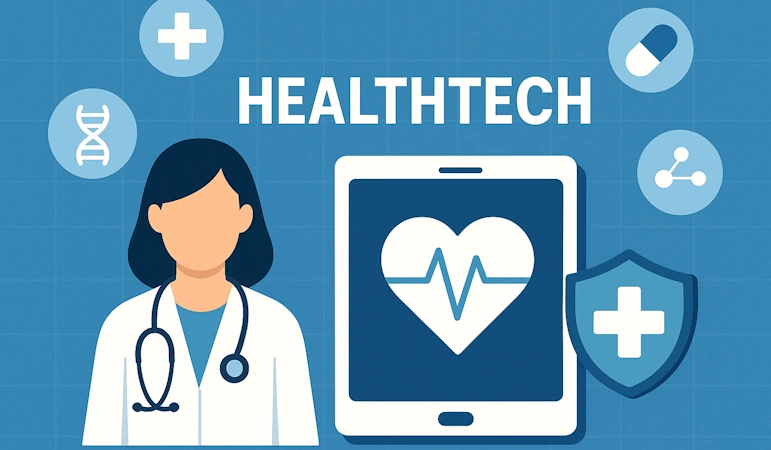
Introduction to HealthTech / MedTech
HealthTech (Health Technology) and MedTech (Medical Technology) represent the fusion of healthcare and IT. It’s where software, data, and devices transform how we treat patients, manage hospitals, and even track our own health. From telemedicine apps and wearable sensors to AI-driven diagnostics and robotics in surgery, the industry is reshaping the doctor’s office and the hospital floor into something far more digital.
Think of it as moving from the clipboard and stethoscope era into one where your smartwatch can warn you about irregular heartbeats before your doctor does.
History of HealthTech
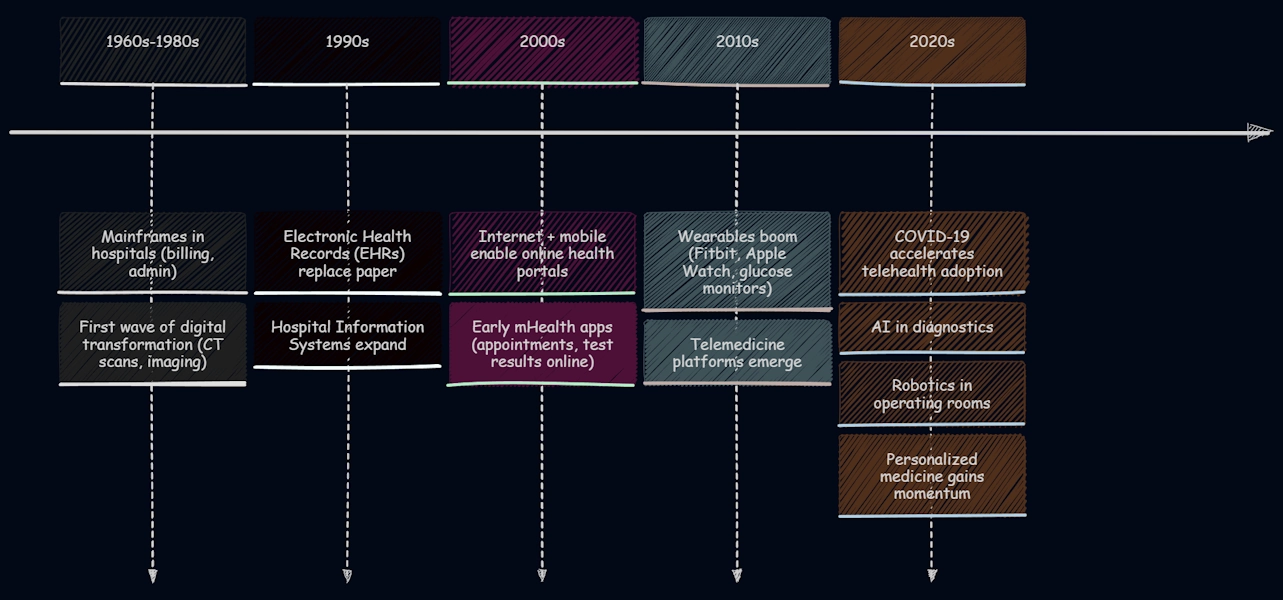
Glossary of Key HealthTech Terms
- EHR (Electronic Health Records): Digital records of a patient's medical history, treatments, and results.
- Telemedicine: Remote delivery of healthcare services via video calls and digital platforms.
- mHealth (Mobile Health): Mobile applications for fitness tracking, chronic disease monitoring, or wellness coaching.
- Digital Therapeutics (DTx): Software-based treatments validated by clinical evidence (e.g., apps for diabetes or mental health).
- Wearables: Devices like smartwatches or biosensors that collect health metrics.
- Remote Patient Monitoring (RPM): Continuous monitoring of patients’ vitals outside hospitals.
- Interoperability: The ability of systems (EHRs, labs, apps) to share and use data.
- HL7 / FHIR: Standards for healthcare data exchange via APIs.
- HIPAA / GDPR / MDR: Key regulations governing privacy and security in healthcare.
Key Technologies and Tools in HealthTech
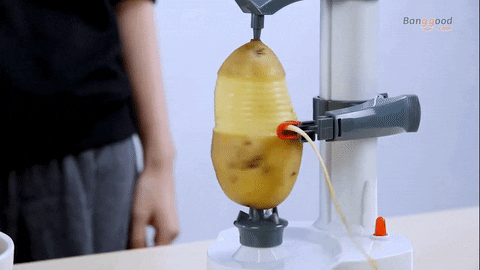
Telemedicine platforms
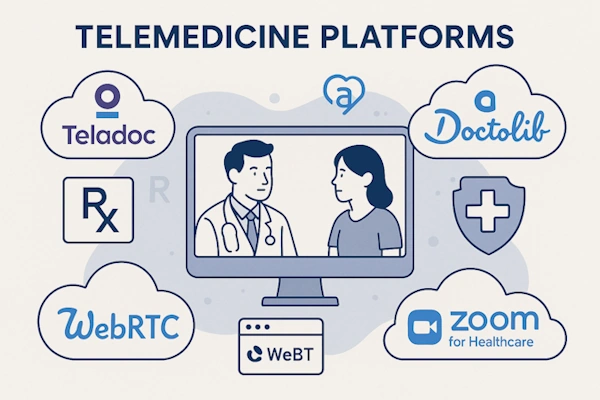
Platforms such as Teladoc, Amwell, Doctolib, and Zoom for Healthcare allow doctors to provide remote consultations, manage prescriptions, and even coordinate chronic disease care. From a developer’s perspective, these platforms require real-time video streaming, secure authentication, and integration with EHR systems. Building them often involves WebRTC, HL7/FHIR APIs, and HIPAA-compliant data storage.
Wearables & IoT devices
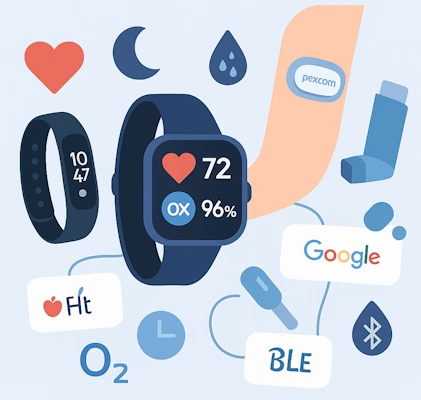
Devices like the Apple Watch, Fitbit, Dexcom continuous glucose monitors, and connected inhalers continuously track metrics such as heart rate, sleep, oxygen saturation, or glucose levels. Developers build apps around APIs such as Apple HealthKit, Google Fit, and Bluetooth Low Energy (BLE) integrations. The challenge is to ensure low-power data transfer, accurate readings, and synchronization across multiple devices.
AI & Machine Learning
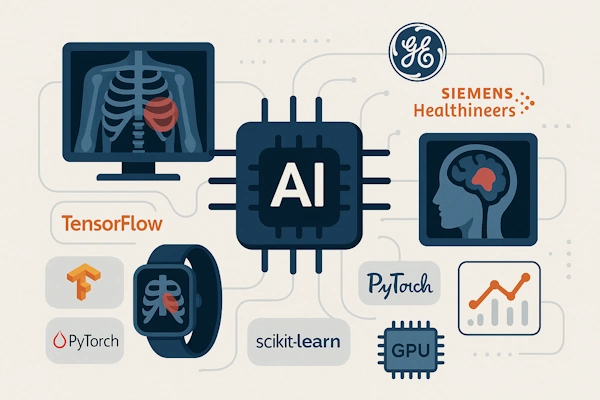
AI models power diagnostic tools that read radiology images (X-rays, MRIs, CT scans), detect anomalies, and assist in early disease detection. Companies like Siemens Healthineers and GE Healthcare embed AI into imaging devices, while startups focus on AI pathology or predictive analytics. Development often involves Python ML stacks (such as TensorFlow, PyTorch, and Scikit-learn), GPU acceleration, and data pipelines capable of handling massive, anonymized medical datasets.
EHR Systems & Interoperability APIs
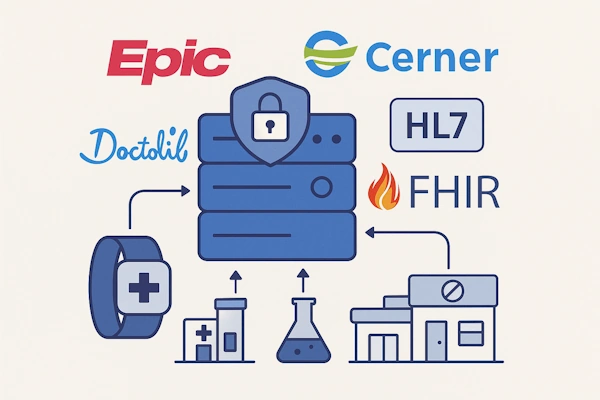
Large systems, such as Epic and Oracle Health, dominate the hospital IT landscape. Developers working with them focus on interoperability via HL7 and FHIR standards, enabling different clinics, labs, and pharmacies to share patient data. Common challenges include legacy integration, data mapping, and strict role-based access controls.
Cloud and Mobile Health Apps
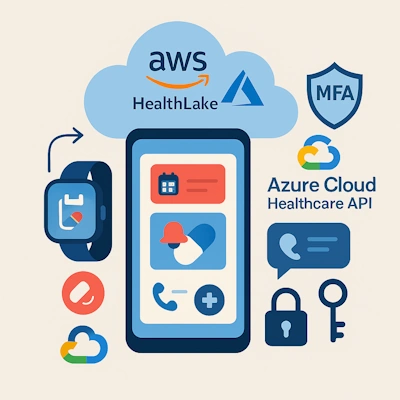
Healthcare cloud solutions, including AWS HealthLake, Azure Health Data Services, Google Cloud Healthcare API, and others, offer storage and analytics capabilities while ensuring compliance. Mobile apps are becoming increasingly patient-facing, offering features such as appointment booking, medication reminders, and the ability to chat with doctors. Developers must balance performance with strict security measures (encryption, anonymization, and multi-factor authentication) and design a user experience that even non-technical patients can easily use.
Robotics & AR/VR
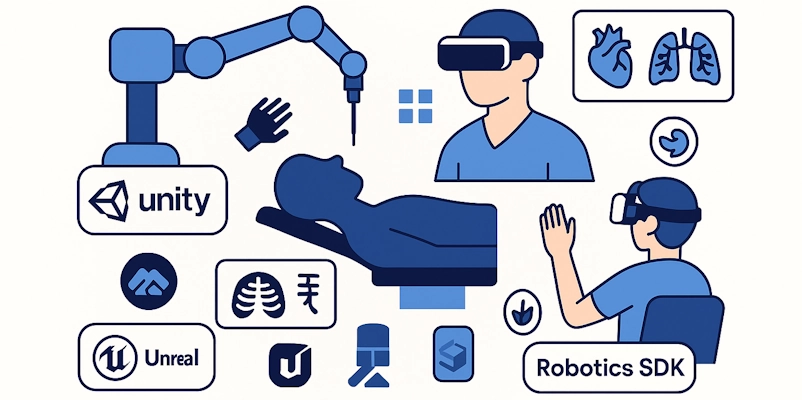
Surgical robots, such as the da Vinci Surgical System, enable minimally invasive procedures with high precision and accuracy. AR and VR are used in surgeon training, rehabilitation, and even pain management therapy. For developers, this involves real-time sensor data, haptic feedback systems, and 3D rendering engines. Toolchains often rely on Unity, Unreal Engine, and specialized robotics SDKs.
Key Players and Products in HealthTech

Epic Systems

One of the most widely used EHR platforms in the US. Developers working with Epic often integrate via FHIR APIs, HL7 v2/v3 messages, and custom SDKs for patient portals.
Cerner (Oracle Health)

A major EHR competitor, offering hospital-wide IT systems. Known for APIs and developer programs enabling third-party healthcare apps.
Siemens Healthineers & GE Healthcare
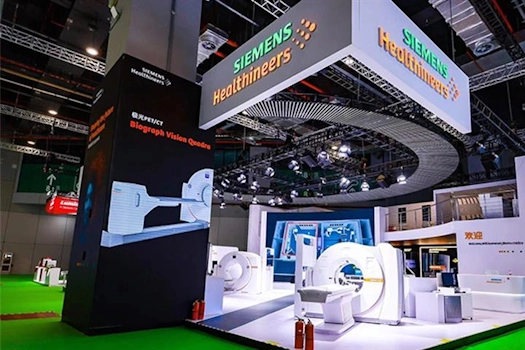
Leaders in medical imaging, diagnostics, and connected devices. Their platforms often expose DICOM standards, AI-enhanced imaging APIs, and HL7 integration.
Teladoc & Amwell
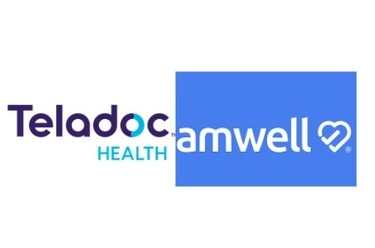
Global leaders in telehealth. Their platforms require robust real-time communication protocols, seamless payment integrations, and strict regulatory compliance.
Doctolib
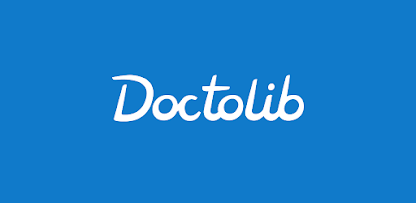
A European platform combining telemedicine with booking and scheduling. Developers face challenges in scaling for millions of users across multiple EU jurisdictions with a GDPR-first design.
Apple Health & Google Fit
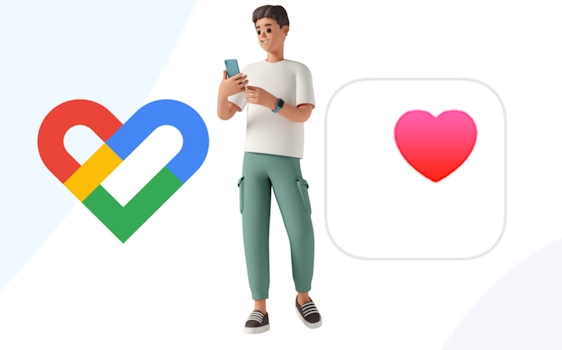
Consumer ecosystems aggregating health data from wearables and apps. Developers plug into their APIs and SDKs for data sync, but must design consent workflows carefully.
Philips Healthcare
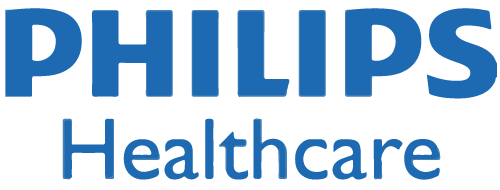
Provides connected care solutions, monitoring devices, and integration hubs. Known for developer tools around IoT health data ingestion.
IBM Watson Health (now Merative)
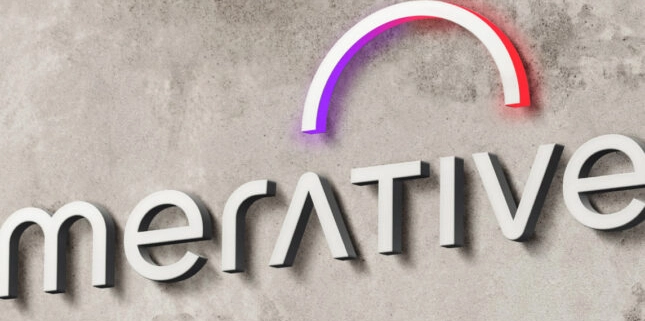
Specializes in AI/analytics for medical research and hospitals—their APIs process large-scale structured/unstructured datasets.
Features of Domain Development in HealthTech

- Security and Privacy First – Healthcare data is a prime target for hackers. Best practices include AES-256 encryption, TLS 1.3 for data in transit, anonymization frameworks, and fine-grained RBAC. Many apps add MFA and biometric authentication.
- Regulatory Overhead – Developers must navigate HIPAA (US), GDPR (EU), and MDR (EU) for medical devices. This involves implementing audit logging, patient consent management, and automated data retention/deletion policies.
- Integration Challenges – Hospitals often use legacy IT systems (many of which are 20+ years old). Developers implement middleware, ETL pipelines, and API gateways to bridge modern cloud apps with on-prem EHR systems.
- Interoperability Standards – HL7 v2/v3 and FHIR R4 are essential. Building compliant APIs requires handling terminology standards (e.g., LOINC, SNOMED CT, ICD-10) and ensuring that mappings don’t compromise clinical accuracy.
- Usability for Clinicians – Doctors can’t spend 10 clicks per task. Developers need streamlined UX, voice input, context-aware alerts, and offline-first modes. Frontend stacks often rely on React/Angular with accessibility features (WCAG compliance).
- Mobile-First Thinking – Patients Expect Cross-Platform Apps. Standard stacks: Flutter, React Native, or native iOS/Android. Offline sync, push notifications, and a lightweight design are key.
Trends and Future in HealthTech

- AI-driven Personalized Medicine – Using genetic data, lifestyle, and real-time vitals to tailor treatments. This requires bioinformatics pipelines, scalable ML models, and privacy-preserving computation (federated learning).
- Predictive Analytics – Hospitals are deploying predictive engines for readmission risks, ICU overload, and outbreak monitoring. Developers work with time-series models, cloud-native analytics, and real-time dashboards.
- Digital Twins – Creating a virtual replica of a patient to simulate outcomes. This uses 3D modeling, real-time sensor streams, and advanced simulation engines.
- Hospital-at-Home Models – Remote monitoring kits with connected devices. Involves IoT edge computing, device provisioning, and integration with central dashboards.
- Genomics and Precision Medicine – DNA sequencing data analyzed with high-performance computing (HPC), big data frameworks (Spark, Hadoop), and specialized bioinformatics libraries.
- Blockchain in Healthcare – For patient record sharing, smart contracts for insurance claims, and tamper-proof logs. Stacks often involve Hyperledger, Ethereum smart contracts, and IPFS.
- AR/VR and Metaverse – VR used for therapy and training; AR overlays in surgery. Developers build with Unity/Unreal, haptics integration, and low-latency rendering.
- Voice & Conversational AI – A Growing trend in patient-facing apps. Developers integrate NLP models (GPT, BERT), speech-to-text APIs, and clinical knowledge graphs.
Conclusion
HealthTech / MedTech is one of the most impactful intersections of IT and real life. It improves patient care, empowers individuals, and makes healthcare more efficient. Yet, it also challenges developers with heavy regulation, high security requirements, and complex integrations.
For engineers, this domain is exciting: you’re not just writing code – you’re building systems that can literally save lives. In the next decade, HealthTech is expected to accelerate, presenting opportunities for those who can strike a balance between innovation and trust and safety.
